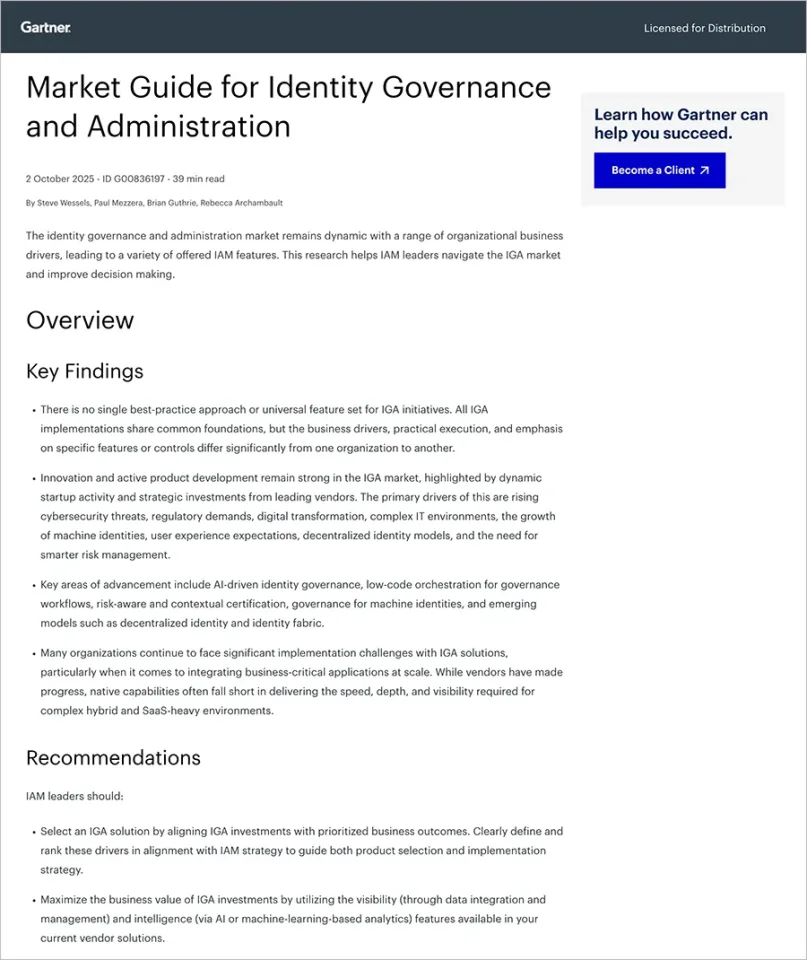The recent announcement from SAP regarding discontinuing support for its SAP Identity Management (IDM) product has left many organizations searching for alternative Identity and Access Management (IAM) solutions. As SAP customers embark on this transitional phase, a structured approach to selecting a new vendor becomes paramount. Here’s a guide to navigating this journey:
Understanding the Landscape
With the impending end of support for SAP IDM, organizations must assess their current application landscape and identify gaps and requirements for a new solution. This involves understanding the functionalities provided by SAP IDM and determining the essential features and capabilities needed in a replacement solution.
Internal Evaluation Processes
Each organization has its own procurement processes and policies. Understanding these protocols is crucial in ensuring a smooth transition to a new vendor. Whether it involves issuing Requests for Proposal (RFPs) or adopting a more flexible evaluation approach, aligning with internal procurement guidelines streamlines the vendor selection process.
Time and Resource Management
Time is of the essence when transitioning to a new solution. Support from top management, identifying key milestones and deadlines, and allocating internal resources accordingly all help facilitate a timely transition. Additionally, clear communication and coordination with potential vendors are essential for meeting project timelines and objectives to successfully execute a transition plan.
Exploring Vendor Options
When transitioning away from SAP IDM, organizations have the opportunity to explore a range of vendors in the market. Initial meetings with potential vendors should delve into their product offerings, industry experience, integration capabilities, customer support mechanisms, and future product roadmaps. Evaluating these factors helps in making an informed decision aligned with organizational needs.
The Vendor Checklist: 8 Questions to Ask Before Making the Decision
- Do they have a customer base in your industry?
- Do they have a customer base with a similar application landscape?
- Evaluate their integration capabilities and consider scalability and flexibility. What resources does the vendor have internally to help customers and ensure they understand the current and potential future application landscape and risk and compliance requirements?
- Can you speak with any referenceable customers about their user experience, support, and reliability?
- What are the cost implications of the selected product? Are there customer case studies or other materials available to help assess the business value impact of their product?
- What is the customer support process?
- Who implements and supports their products: internal resources only, partner organizations, etc.?
- What is the future roadmap of the product, and can the vendor show a historical commitment to innovation and meeting customer enhancement and functionality requests?
Seeking Strategic Partnerships
Beyond fulfilling immediate requirements, organizations should seek vendors who can act as strategic partners. A vendor who understands the organization’s long-term vision and can support its journey toward maturity and optimization is invaluable. This entails not only providing solutions but also offering guidance and support in navigating the evolving identity and access management and compliance landscape.
Crafting an Implementation Plan
Once a new IAM vendor is selected, the focus shifts to crafting an implementation plan. This plan should outline roles, responsibilities, timelines, and deliverables, ensuring a smooth transition from SAP IDM to the new solution. Clear communication and collaboration between the organization and the chosen vendor are essential for project success.
In conclusion, the transition from SAP IDM presents challenges and opportunities for organizations. By approaching the vendor selection process methodically and strategically, organizations can find a replacement vendor that not only addresses their immediate needs but also supports their long-term growth and resilience in the ever-changing digital landscape.
Get in touch with Pathlock today to discover how other organizations are capitalizing on this opportunity to implement a meticulously planned transition strategy that will prepare them for the future.



